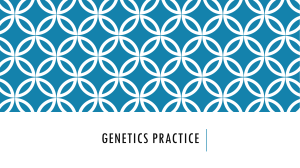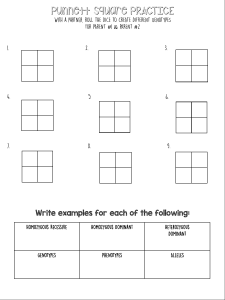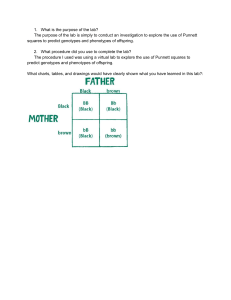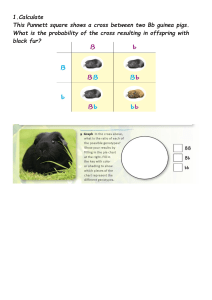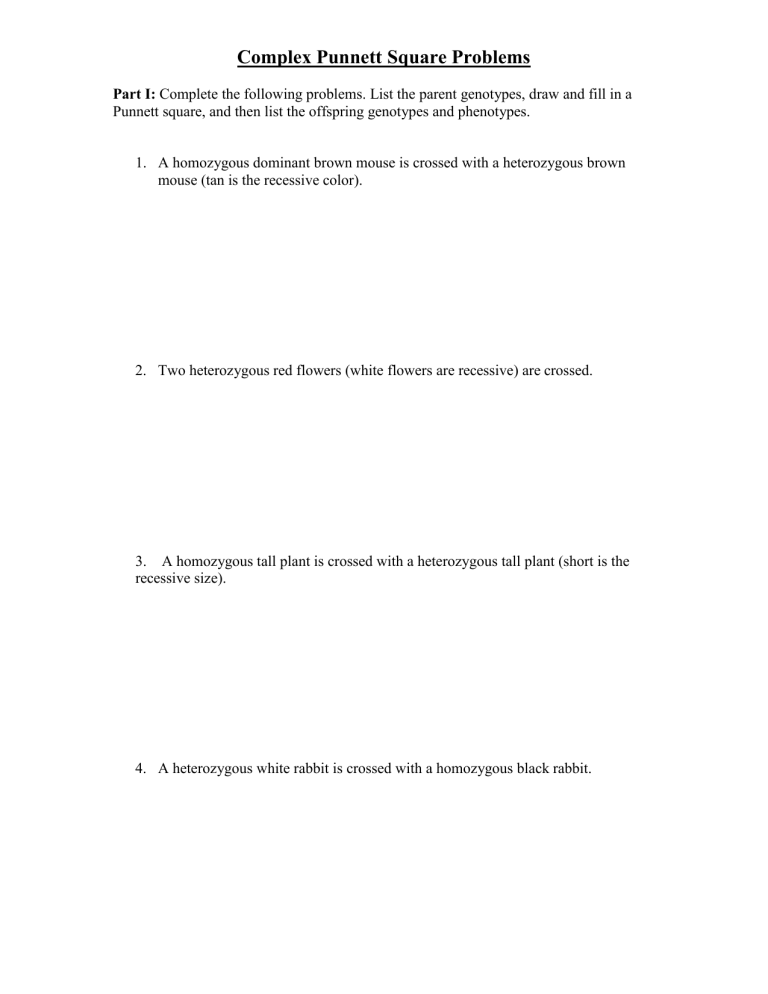
Complex Punnett Square Problems Part I: Complete the following problems. List the parent genotypes, draw and fill in a Punnett square, and then list the offspring genotypes and phenotypes. 1. A homozygous dominant brown mouse is crossed with a heterozygous brown mouse (tan is the recessive color). 2. Two heterozygous red flowers (white flowers are recessive) are crossed. 3. A homozygous tall plant is crossed with a heterozygous tall plant (short is the recessive size). 4. A heterozygous white rabbit is crossed with a homozygous black rabbit. Part II: Working Backwards Sometimes we only know about the offspring and we want to learn about the parents. You should have noticed some things that will help you figure this out. For example, when both parents are heterozygous the phenotypic ratio always comes out 3 to 1. If one parents is homozygous recessive and the other is heterozygous, the ratio always comes out 1 to 1. Keep this in mind when solving these problems. 5. In pea plants, yellow seeds are dominant to green seeds. A pea plant with yellow seeds is crossed with a pea plant with green seeds. The resulting offspring have about equal numbers of yellow and green seeded plants. What are the genotypes of the parents? Make a Punnett square to prove it. 6. In another cross, a yellow seeded plant was crossed with another yellow seeded plant and it produced offspring which were 25% green. What are the genotypes of the parents? Make a Punnett square to prove it. 7. In humans, brown eyes are dominant to light eyes (blue or green). Make a Punnett square to show how two brown eyed parents could have a blue-eyed child.
